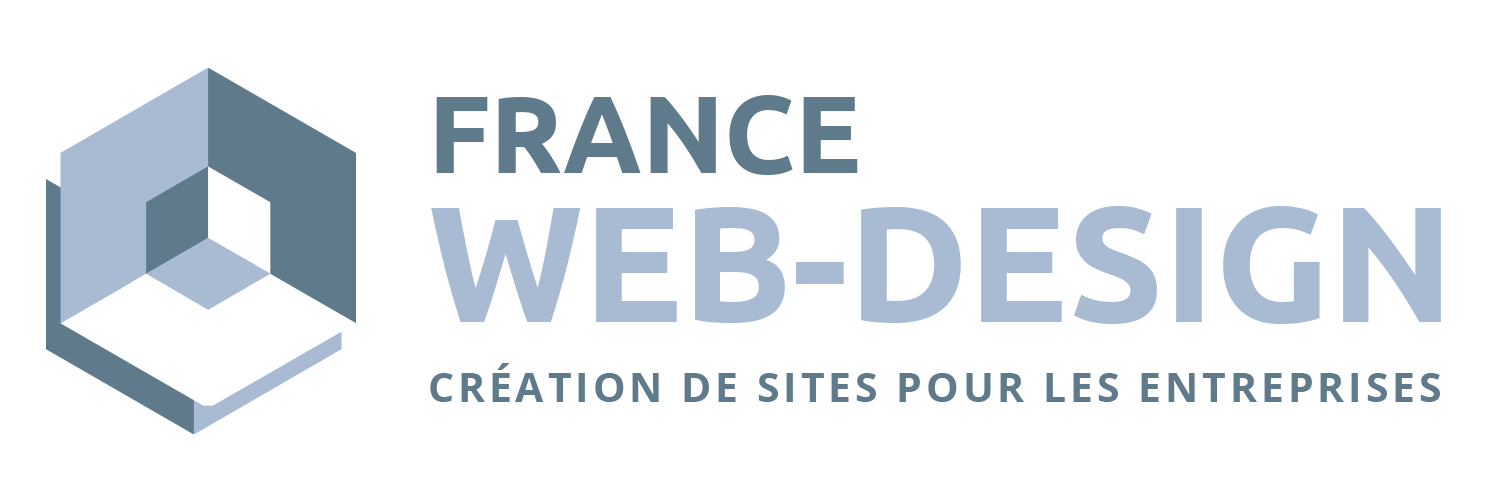Introduction to creating a network of natural backlinks
Search engine optimisation, and more specifically backlinks, is one of the essential pillars of SEO. A backlink is a hypertext link pointing to a website from another website. It is a criterion of relevance for search engines such as Google, which considers each backlink as a form of approval and recognition. However, not all backlinks are equal in the eyes of search engines. Quality, relevance and naturalness are key aspects to consider.
Preparing the ground for the creation of a network of natural backlinks
Before you start creating backlinks, it's essential to understand that quality is more important than quantity. Obtaining backlinks from high-authority sites in your niche will be more beneficial than obtaining hundreds of backlinks from low-authority sites. Furthermore, to encourage organic link building, you need to ensure that your backlinks come from a variety of sources and that they point to different pages on your website, not just the home page.
Need a website?
Ask for a free quote!
html
Relevance Research above all: targeting the right areas rather than quantity
Before even thinking about "link building", the most recent SEO literature - whether Helpful Content updates or the EEAT experiment detailed by Google in 2023 - insists on thematic relevance. The strategy is to learn to say no: refuse links from blog farms, opaque PBNs or generic press release sites. Semrush data sets show that a DIY site with 40 links from blogs on average gets 17 % less organic traffic than an equivalent site with 10 hyper-contextual links. The correlation is not perfect, but the lesson is clear: thematic relevance is the connective tissue of link equity.
on average gets 17 % less organic traffic than an equivalent site with 10 hyper-contextual links. The correlation is not perfect, but the lesson is clear: thematic relevance is the connective tissue of link equity.
To identify these hyper-contextual domains, you can combine three sources: the "Internet users also search" suggestions in Google, a Topical Trust Flow filter on Majestic and the "Competitors" tab on Ahrefs. By studying the first 50 results from each source, you can build up a precise semantic map. This avoids the temptation to go "link-hunting", by favouring contacts capable of creating a logical mesh. This same approach has propelled the blog of French start-up PayFit: from 4,000 to 120,000 visitors/month between 2019 and 2021, with just 280 referring domains, but almost all HR, payroll or legal-tech.
Audit and clean-up: starting from a sound base to avoid future penalties
Organic link building works like permaculture: you can't plant in acid soil. Before adding a single backlink, carry out a complete audit of your existing links. The combination of Screaming Frog (crawl), Ahrefs (backlinks) and Google Search Console (internal/external links) is all you need. Systematically remove or disavow :
- Links from de-indexed or expired domains ;
- Over-optimised anchors ("best cheap student loan 2024"), often inherited from legacy campaigns;
- Triangular schemes of the type A → B → C, banned since Penguin 4.0.
Case in point: in 2022, the organic e-commerce company Greenweez spent two weeks purging 1,400 footer links that had appeared after a takeover of recipe blogs. The result: +22 % in organic visibility in three months, while avoiding an increase in the number of links. on manual dreaded. The moral: the speed of removing a bad link is often more profitable than the speed of acquiring a new one.
on manual dreaded. The moral: the speed of removing a bad link is often more profitable than the speed of acquiring a new one.
Content as a natural magnet: creating irresistible assets
Data-driven studies, fuel for links
Journalists, bloggers and newsletter creators are constantly looking for fresh figures. That's why proprietary data studies - salaries, purchasing behaviour, email open rates, etc. - are the champions of link bait. The American agency Fractl analysed 759 campaigns: those based on exclusive data obtained 2.6 times more links than simple infographics. In France, Shine (pro bank) published its "Freelance Barometer" in 2021: 784 referring domains in six weeks, including Les Echos, Maddyness and Korii, with no paid outreach. Their secret? An open collaborative Google Sheet, updated in real time, boosting credibility.
The complete evergreen guides
The "footer" of a backlink network is long-form content (5,000 words+) that responds to a complex search query. Eight years on, the "Composting guide for city dwellers" published as open content by Nantes Métropole is still generating around forty links every quarter. Why should this be? Because other sites are referencing this guide rather than rewriting content that is already exhaustive. When you create a definitive guide, think :
- Scalability: time-stamped updates, such as "last revision March 2024 ;
- Multiple formats: PDF, HTML chaptering, audio version or YouTube video ;
- Downloadable resources: checklists, Notion templates, vector files.
The backlink ecosystem feeds on convenience: if quoting your resource saves a writer three hours, they'll quote it.
The new generation of Guest Blogging: a qualitative approach and co-creation
Guest blogging isn't dead, it's just changed. Gone are the days of throwing 300 words at an obscure blog. Writers want unprecedented value. Case in point: the 2023 collaboration between Swile (dematerialised meal vouchers) and Welcome to the Jungle. Swile proposed a co-authored article on post-COVID employee well-being trends, based on their own app usage data. In exchange, Swile obtained not only a backlink to a complete study but also an infographic embed that could be used by other media, generating a second level of links (link earning) via the ripple effect.
The method :
- Identify a niche medium with an equivalent or higher Domain Rating.
- Submit two pitches from different angles, specifying which dataset or exclusive source you are providing.
- Deliver impeccable, pre-optimised content (titles, metadata, compressed images) to minimise the media's editorial workload.
- Facilitate co-promotion on LinkedIn, Slack Communities and newsletters.
Digital PR: PR Stunt as a mainstream backlink vector
Some saturated industries (insurance, fintech, video games) need links from national authority sites (BFM, Le Monde, Le Figaro) to get past a semantic hurdle. The Digital PR Stunt consists of launching an operation that is creative enough to create a buzz. A famous example is the "Netflix Binge Candle (2019)" campaign, in which Netflix offered popcorn-scented candles that revealed a promotional code after being lit for 3 hours. Covered by The Verge, Adweek, etc. In addition to the branding impact, the landing page garnered 2,300 referring domains. In France, on a more modest scale, the Alan mutual insurance company has put an open-source "Compare my waiting time at the doctor's" simulator online. Coverage: Franceinfo, Numerama, Doctissimo (over 600 domains).
For a successful PR Stunt :
- Keep abreast of current events: surf on a hot topic (e.g. inflation, generative AI).
- Offer a free resource or immersive mini-site (WebGL, interactive data viz).
- Produce a media kit containing FAQs, quotes from spokespeople and HD assets.
- Measure incoming links and mentions to convert in real time via a Looker Studio dashboard.
Community participation: forums, Slack, Discord and LinkedIn groups
Backlinks in no-follow seem less sexy, but they serve as secondary signals (co-citation, qualified traffic). Take Figma, for example, before it was taken over by Adobe: 40 % of their referral traffic came from Slack communities (#design, #frontend) and subreddits such as r/web_design, where most of the links were no-follow but generated 1,000+ daily sessions. The resulting visibility (less pogo-sticking) boosted their positions on queries such as "design collaboration tool".
Procedure :
- Map the communities where your persona already spends two hours a day.
- Make an authentic contribution: tutorial, GIF file, AMA.
- Insert the link only when the information value justifies it.
- Keep the flame burning: respond to comments within 24 hours, organise virtual events.
The power of free tools: calculators, checklists and browser extensions
A free tool is a link in disguise. Since 2017, HubSpot has been generating more than 20,000 new backlinks every month thanks to its generators (invoices, email signatures, video scripts). Key to success: solving a targeted micro-problem. French B2C example: the UnitPrix (food) weight comparator launched by the UFC-Que Choisir association. With no media budget, the page now receives 950 referral domains because it solves the problem of price per kilo. Food, ecology and home economics bloggers systematically recommend it in their recipe cards.
Process :
- Choose a problem frustrating and highly sought-after.
- Low-code prototyping (Bubble, Glide) to validate interest.
- Optimising the landing page: Core Web Vitals, FAQ schema, social metadata.
- Promote to 50 micro-niche influencers via a personalised message.
Exchanges of value vs. exchanges of links: the era of co-marketing
The exchange of direct links (site A ↔ site B) is detected by modern algorithms. The solution? Triangular co-marketing, where value is transferred in the form of content, webinars or shared leads. Shopify has excelled in this tactic: a webinar on "social commerce" co-hosted with TikTok for Business, hosted on a third-party sub-domain (tiktok.shopify.com) and relayed by marketing magazines. The registration page links to the Shopify guide, while TikTok obtains qualified traffic. No one is talking about "link swap", but the domains are nonetheless collecting backlinks that are legitimate in Google's eyes.
The impact of physical and virtual events
Conferences and meetups are an underestimated backlink machine. The announcement, the agenda page, the speakers' bios and then the reports published by the participants multiply the anchor points. Take Viva Technology, for example: each exhibiting start-up has a profile page containing links to its website. Out of 2,000 exhibitors, more than 75 %s obtained at least one additional referring domain thanks to press articles announcing their participation. The same logic applies to webinars recorded on Livestorm: the replay page (if indexed) accumulates links from recap newsletters.
The art of the Broken Link Building, 2024 version
BLB consists of identifying broken links and offering an equivalent resource. In 2024, we can take the technique further using AI: using Python scripts (BeautifulSoup) coupled with the Wayback Machine API to recover the original version of the missing content, then offer an enriched update. A remarkable case in point: the NGO Surfrider Foundation found 312 broken links pointing to a 2010 report on plastic pollution. They published a 2023 version, contacted the 312 site owners again, and the result: 221 links restored to their new PDF, +12 DA under Moz in four months.
Measure, test, iterate: analytics as a compass
Without measurement, link building is just marketing varnish. Define KPIs:
- Number of new referral domains/month and regularity.
- Average Domain Authority score (DR Ahrefs, TF Majestic).
- Referral traffic and associated conversion rates.
- Changing positions on target requests.
At monthly intervals, export your Ahrefs data to Google BigQuery for cross-referencing with Google Analytics sessions. You'll then be able to attribute a ROI that's not just SEO, but also business. Airbnb has shown that 18 % of organic bookings came from users who initially arrived via a referral link (travel blogs), representing 110 million $ of direct revenue in 2019. Without a granular attribution model, this figure would have gone unnoticed.
Mistakes to avoid
The temptation of mass automation
Tools like GSA Search Engine Ranker promise thousands of links in just a few hours. In addition to the risk of an algorithmic penalty, you're diluting your crawling budget, as a French SaaS experienced: after buying 15,000 automated links, its Search Console displayed "Discovery anomalies", slowing down the indexing of crucial new product pages.
The "copy and paste exact anchor" syndrome
Out of 60 million links, Moz notes that less than 3 % use the exact anchor of the main query. Instead, aim for natural distribution (brand, naked URL, "find out more", long anchor). Otherwise, you are sending out a signal of over-optimisation. The partial penalty suffered by Overstock.com (2011) remains a textbook case: over-representation of "discount furniture" in anchors, 26 % drop in traffic.
Neglecting international coherence
If your site targets several markets, avoid creating English-language backlinks pointing to a French page (and vice versa). Prefer a hreflang structure and localised backlinks. PrestaShop doubled its traffic in Spain after redirecting the Spanish press to the /es/ version, rather than /fr/.
Synergies with other marketing levers
Organic link building never stands alone. It is interwoven with :
- Content marketing (inbound): each new chapter of an ebook can become a guest post pitch.
- Social Media: a UGC campaign on Instagram creates potential quotes.
- SEA: you can amplify the reach of a link-bait asset via Google Ads to speed up the first shares and create a snowball effect.
- CRM: relaying your new content to customers in a newsletter increases organic shares and therefore the likelihood of links.
90-day roadmap: moving from theory to action
Day 1-7: complete audit, disavow toxic links.
Day 8-21: production of a data-driven asset + guest posts editorial planning.
Day 22-45: Targeted outreach, publication of the minimum viable free tool.
Day 46-60: PR Stunt or co-branded webinar + real-time measurement of impact.
Day 61-75: automated broken link building + personalised reminders.
Day 76-90: KPI analysis, reallocation of budget to the most ROI-producing tactics, content update.
This roadmap is not a dogma but a starting point. The key is to create a virtuous circle: remarkable content → visibility → natural backlinks → increased authority → new content opportunities.
Conclusion: patience as your best ally
A network of natural backlinks needs to be cultivated like a reputation. Time is your friend, impatience your enemy. By internalising the principles of relevance, authenticity and added value, you will build a lasting asset that neither an algorithm update nor aggressive competition will be able to demolish. So get to your keyboards, your datasets, your webinars: the next essential web resource may well be yours.









